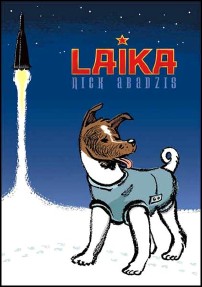STRIP REVIEW: LoserPalooza
 First, the consumer report: LoserPalooza is a treasury-sized collection, which means it’s larger and more expensive than the usual run of comic-strip collections, and also that it collects strips from two previous smaller collections. In this case, LoserPalooza has the comics from Say Cheezy and Scrum Bums. LoserPalooza does have the Sunday strips in color, though, so it’s not entirely twice-baked beans. (It’s also rarely clear whether a strip is being reprinted in its entirety to begin with, or if all of the strips from the smaller collections make it into the Treasuries; specifically, it’s not clear in this case.)
First, the consumer report: LoserPalooza is a treasury-sized collection, which means it’s larger and more expensive than the usual run of comic-strip collections, and also that it collects strips from two previous smaller collections. In this case, LoserPalooza has the comics from Say Cheezy and Scrum Bums. LoserPalooza does have the Sunday strips in color, though, so it’s not entirely twice-baked beans. (It’s also rarely clear whether a strip is being reprinted in its entirety to begin with, or if all of the strips from the smaller collections make it into the Treasuries; specifically, it’s not clear in this case.)
Get Fuzzy is one of the most successful new strips of the past decade, and possibly the most successful strip launch since Dilbert in 1989. (The competition includes strips like Pickles, Baby Blues, and Adam @ Home, which aren’t as edgy as Get Fuzzy and so are probably in more papers daily. On the other hand, Get Fuzzy seems to be one of the most successful comics when it comes to selling reprint collections, so it’s hard to tell which strip actually makes the most money or has the most readers.) In any case, it’s still fairly young, for a daily newspaper strip, and it’s grown to a lot of papers pretty quickly.
As the characters note in a storyline mid-way through this book, Get Fuzzy could be seen as a Bizarro-world version of Garfield. A man of indeterminate age (Rob Wilco) lives with a cat (Bucky) and a dog (Satchel), and funny stuff ensues. Except, in Get Fuzzy, we don’t identify with the cat – Bucky is clearly insane (as all cats are). Satchel is lovable but dim, also like most dogs. And Rob isn’t quite as much of a loser as Jon Arbuckle. Well, he is a vegan rugby fan who hasn’t had a date in years, does something unspecified involving crunching numbers, and roots for the Red Sox – so maybe I should say that he’s a more realistic loser than Jon is. Get Fuzzy doesn’t have the ground-into-the-turf running jokes Garfield does – and I hope it won’t, even if it runs for thirty years – but it’s vastly younger than Garfield is, and hasn’t had time to get stale.



 Graeme McMillan of The Savage Critics discovers the single best panel of the week (see above) and
Graeme McMillan of The Savage Critics discovers the single best panel of the week (see above) and 

 Baffling News Story of the Day:
Baffling News Story of the Day: 


 Shannon Wheeler (no relation, as far as I know) is, of course, the creator of
Shannon Wheeler (no relation, as far as I know) is, of course, the creator of 








